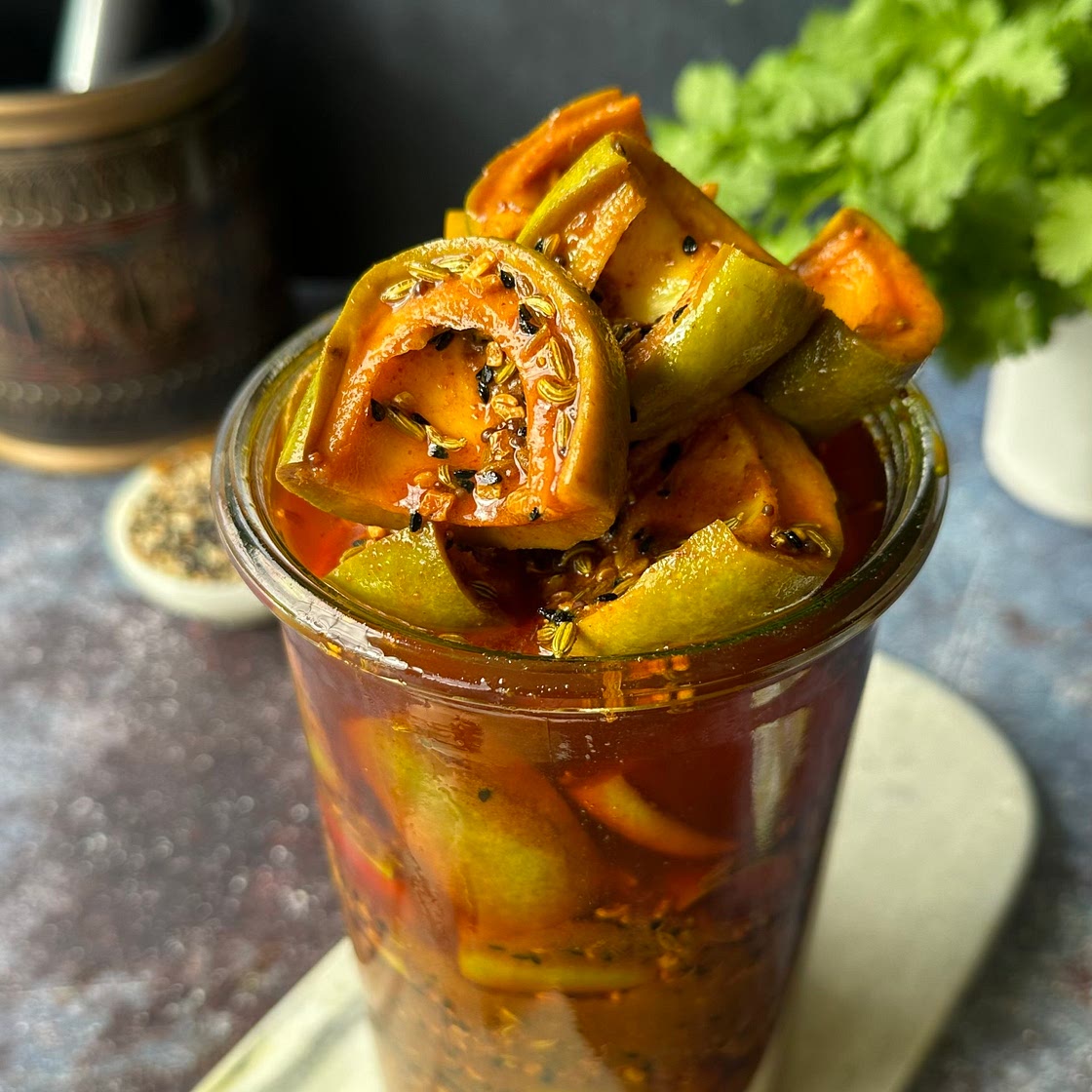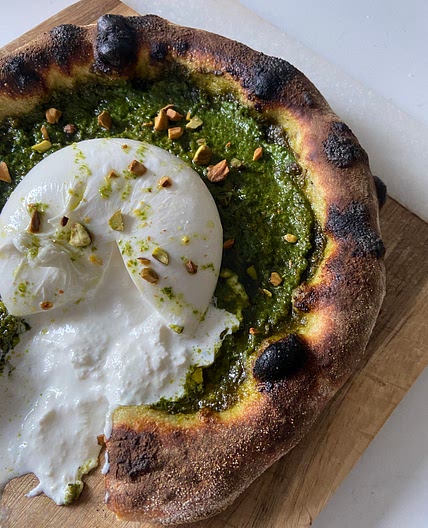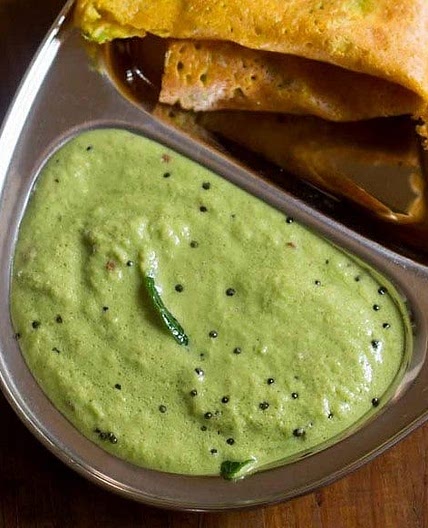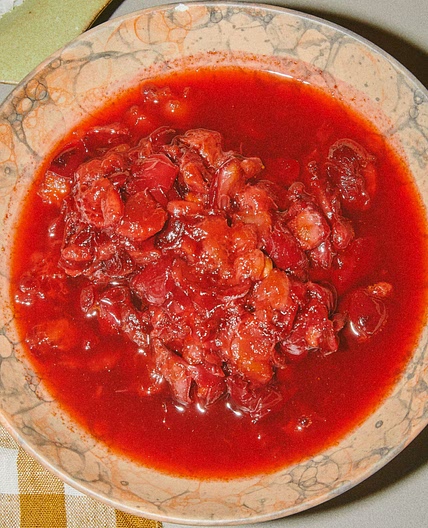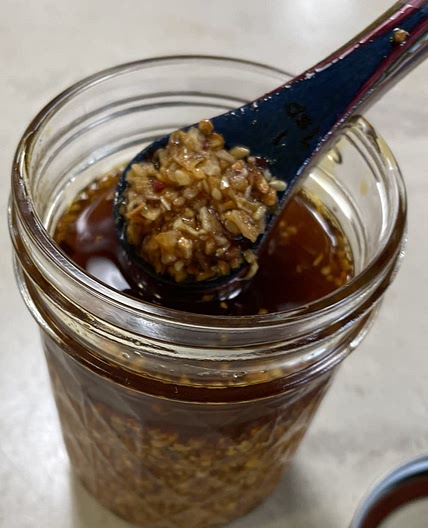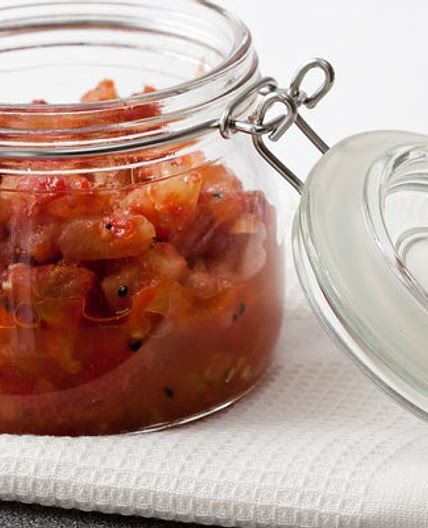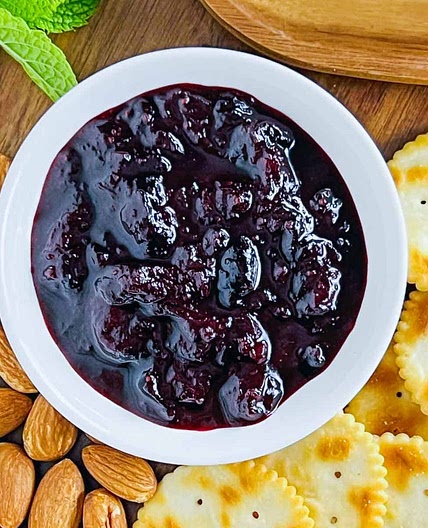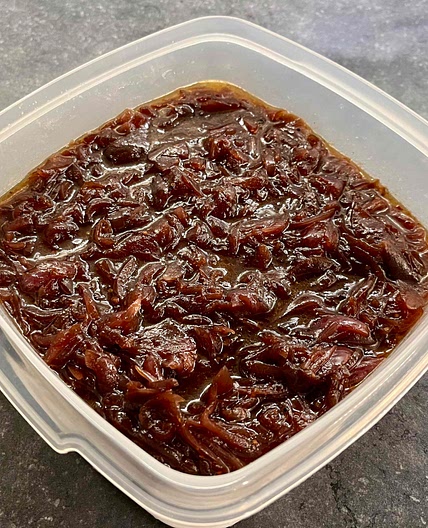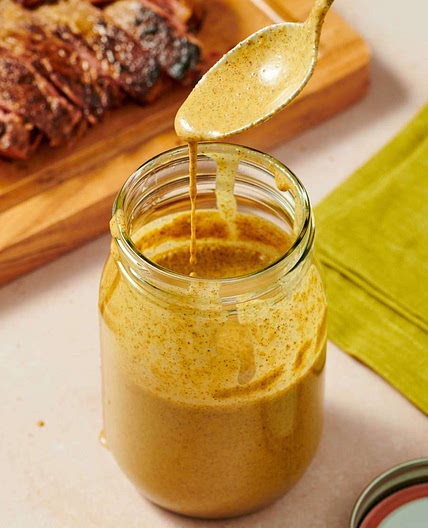By Zubda Malik
Mango Pickle (Aam Ka Achar)
40 steps
Prep:23hCook:10min
Elevate your meals with the zesty kick of homemade mango pickle! Bursting with tangy flavors and aromatic spices, this condiment adds a delightful twist to your favorite dishes. Follow our simple recipe to create a taste sensation that will leave your taste buds craving more.
Updated at: Thu, 09 May 2024 12:55:03 GMT
Nutrition balance score
Unbalanced
Glycemic Index
38
Low
Glycemic Load
5
Low
Nutrition per serving
Calories346.2 kcal (17%)
Total Fat33.3 g (48%)
Carbs13 g (5%)
Sugars6.8 g (8%)
Protein2.6 g (5%)
Sodium3883.2 mg (194%)
Fiber3.5 g (13%)
% Daily Values based on a 2,000 calorie diet
Ingredients
30 servings
Instructions
Preparing the Ingredients:
Step 1
Gather all the spices and salt required for the pickle and keep them in small bowls under sunlight for 1 to 2 hours. This optional step helps in removing any moisture from the spices and salt.
Preparing the Mangoes:
Step 2
Wash the raw mangoes with tap water to remove any dirt. Allow them to drip dry in a colander until completely dry.
Step 3
Using a sharp knife, chop the mangoes into 4 or 6 pieces. Discard the stones and remove the flesh from the stones if necessary. The outer skin can be left on if the mangoes are soft and tender.
Marinating the Mangoes:
Step 4
Place the chopped mangoes in a large clay mixing bowl.
Step 5
Add 200 grams of salt, mix well, cover, and let it rest for 24 hours.
Step 6
After 24 hours, drain the mangoes and place them on a dry kitchen towel in sunlight to dry completely. Ensure to cover them with a net or muslin cloth to prevent dirt and bugs.
Step 7
Note: If you live in a country with more sunlight, you can skip this step and dry the mangoes after cutting for 5 to 6 hours in sunlight. Ensure to place some net or muslin cloth on top to prevent dirt and bugs.
Spicing the Mangoes
Step 8
Transfer the dried mangoes back to the bowl.
Step 9
Add fenugreek seeds and mustard seeds , fennel seeds, nigella seeds, cumin seeds, turmeric powder, red chili powder, and the remaining salt.
Step 10
Mix thoroughly with a steel or wooden spoon or wear gloves to coat the mango pieces evenly with the spices.
Adding Oil and Storage:
Step 11
Place a pan on medium heat. Heat mustard oil until it becomes flaming hot. Remove from the stove and allow it to cool completely.
Step 12
Pour 1 cup of mustard oil into the mixture and mix well.
Step 13
Spoon the pickle into a clean airtight ceramic or glass jar. Use a clean, dry spoon.
Step 14
Add more mustard oil to cover the pickle completely.
Step 15
Seal the jar with a lid and place it in sunlight for 3 to 4 days. Ensure the sunlight is strong for quicker pickling.
Daily Mixing and Sun-Drying:
Step 16
Every evening during the sun-drying period, open the jar and gently mix the pickle with a clean spoon. Move the mango pieces settled at the bottom upwards to ensure even pickling.
Step 17
Continue this mixing and tossing process daily. Bring the jar inside in the evening and place it in a cool, dry spot. Return it to sunlight the next morning.
Maturation and Storage:
Step 18
Initially, the pickle may have a slight bitter taste, which will mellow over time.
Step 19
After 6 to 7 days, the bitterness will dissipate, and the pickle will be ready to eat.
Step 20
The Mango Pickle can be stored at room temperature without refrigeration for up to a year.
Step 21
The best flavor of the pickle will develop after 10-14 days, depending on the weather conditions.
With No Sunlight
Step 22
If you do not have access to direct sunlight for making mango pickle, you can still prepare the pickle using an alternative method. Here's a guide on how to make mango pickle without sunlight:
Step 23
Preparing the Mangoes:
- Wash and dry the raw mangoes thoroughly. Peel and chop them into pieces as per your preference, ensuring they are completely dry.
Step 24
Marinating the Mangoes:
- In a clean and dry mixing bowl, combine the chopped mangoes with the required spices, salt, and mustard oil. Mix well to ensure the mango pieces are coated evenly with the spices.
Step 25
Storing the Pickle:
- Transfer the spiced mango mixture into a clean and airtight glass or ceramic jar. Ensure that the pickle is submerged in mustard oil to prevent spoilage.
Step 26
Fermentation Process:
- Place the jar in a cool and dark place, away from direct sunlight. Let the pickle ferment and mature over time. The absence of sunlight may slow down the pickling process, so allow for a longer fermentation period.
Step 27
Daily Mixing:
- Open the jar daily and stir the pickle mixture with a clean spoon to redistribute the spices and ensure even pickling of the mango pieces.
Step 28
Maturation and Storage:
- Allow the pickle to mature for several weeks to develop its flavors. The absence of sunlight may prolong the pickling process, so be patient with the fermentation period.
Step 29
- Once the pickle reaches the desired taste and texture, store it in a cool, dry place or in the refrigerator to maintain its freshness.
Tips for Making Mango Pickle
Step 30
Quality of Mangoes: Use firm, raw, and unripe mangoes for the pickle. They should be slightly sour and not overly ripe to achieve the desired tangy flavor and texture.
Step 31
Sunlight Exposure: Let the spices and salt sit in sunlight before use to remove any moisture and enhance their flavors. This step can help in preserving the pickle for a longer duration.
Step 32
Drying Mangoes: Ensure that the chopped mango pieces are dried completely before marinating them. Any residual moisture can lead to spoilage of the pickle.
Step 33
Mixing Spices: Thoroughly mix the spices with the mango pieces to ensure even coating. This step is crucial for the flavors to infuse properly into the pickle.
Step 34
Mustard Oil: Use good quality mustard oil for the pickle as it adds a distinct flavor and acts as a preservative. Ensure that the pickle is completely submerged in oil to prevent spoilage.
Step 35
Sun-Drying: Place the pickle jar in direct sunlight for the recommended time for optimal pickling. Strong sunlight aids in the fermentation process and enhances the taste.
Step 36
Mixing Daily: Stir the pickle daily during the sun-drying period to redistribute the spices and ensure uniform pickling of the mango pieces.
Finding Raw and Unripe Mangoes:
Step 37
- Look for mangoes that are firm to the touch and have a green skin color, indicating that they are unripe. Avoid mangoes that are soft or have started to ripen.
Step 38
- Visit local grocery stores, farmers' markets, or ethnic grocery stores that specialize in Indian or Asian produce. They are more likely to have a selection of raw mangoes during the mango season.
Step 39
- Check with local farms or orchards that grow mangoes. They may offer raw and unripe mangoes for sale during the mango season.
Step 40
- Inquire at Indian or Asian grocery stores if they can order raw mangoes for you, especially if they are not readily available in your area.
Notes
0 liked
0 disliked
There are no notes yet. Be the first to share your experience!
